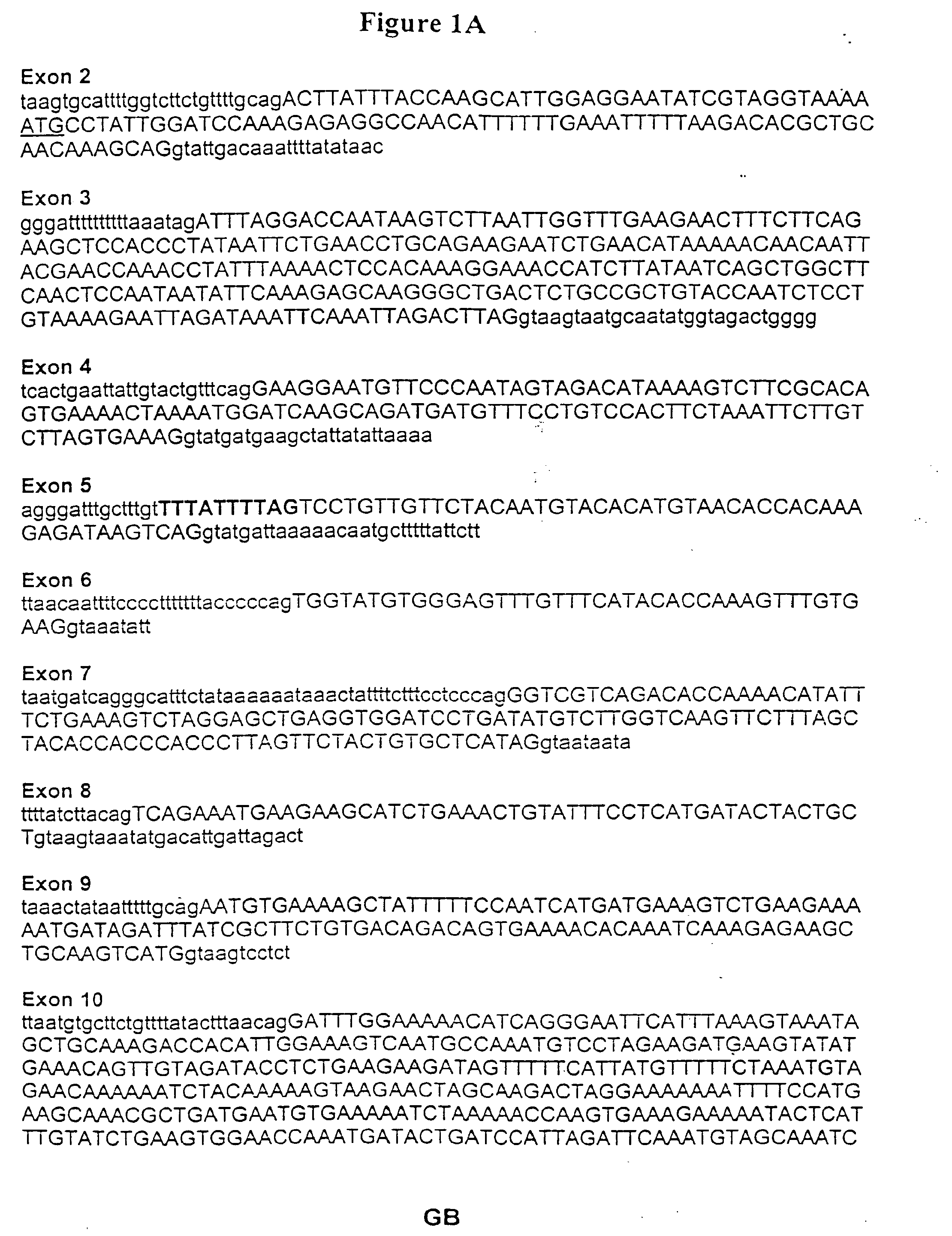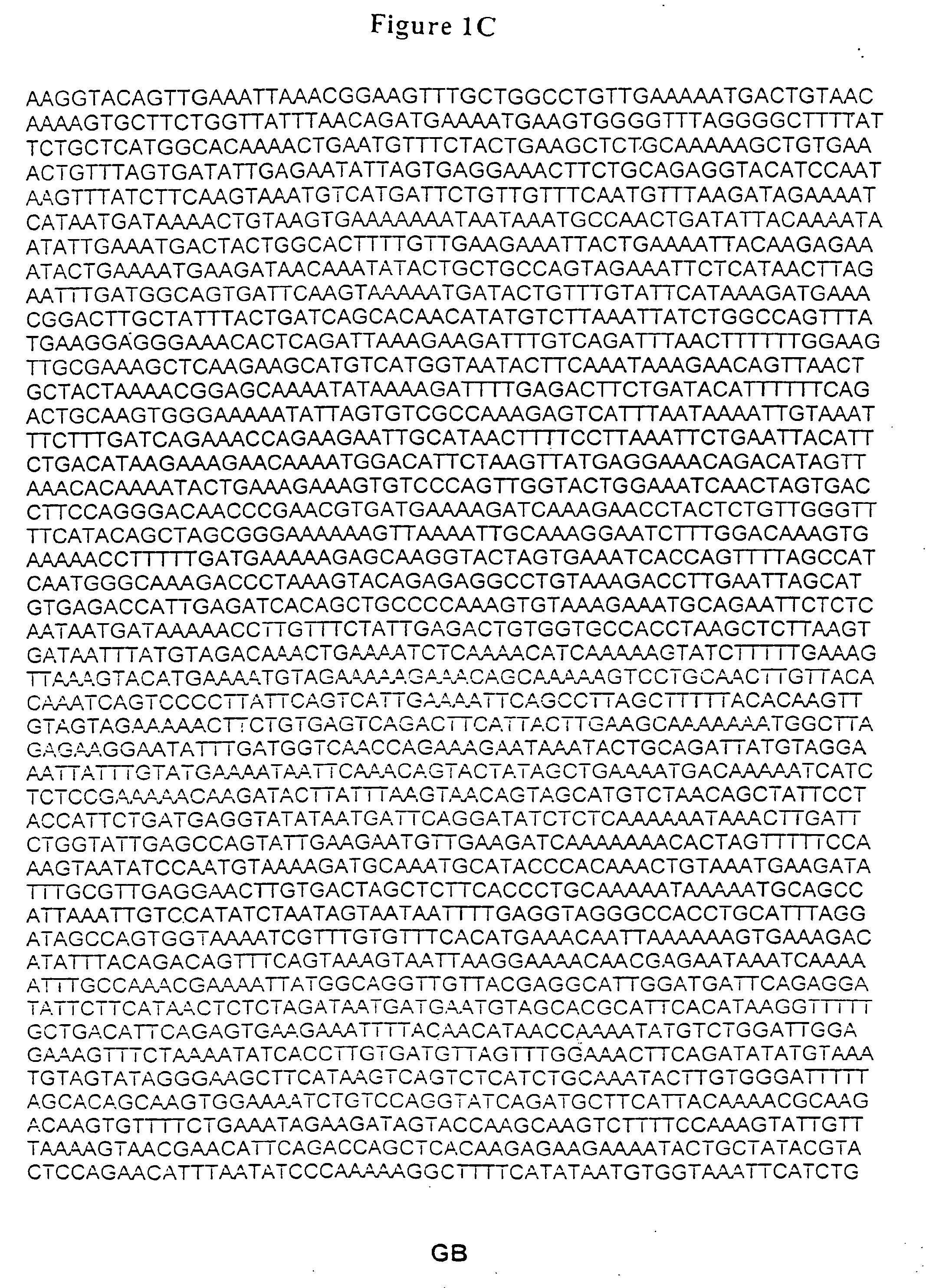Method of Analyzing a BRCA2 Gene in a Human Subject
a human subject and gene technology, applied in the field of gene analysis, can solve the problems of particularly worrisome misinterpretation, and achieve the effect of no increased risk or susceptibility to breast cancer
- Summary
- Abstract
- Description
- Claims
- Application Information
AI Technical Summary
Benefits of technology
Problems solved by technology
Method used
Image
Examples
example 1
Determination of the Coding Sequence Haplotypes of the BRCA2 Gene from Normal Individuals
[0106]Approximately 150 volunteers were screened in order to identify individuals with no cancer history in their immediate family (i.e. first and second degree relatives). Each person was asked to fill out a hereditary cancer prescreening questionnaire (See TABLE I). Five of these were randomly chosen for end-to-end sequencing of their BRCA2 gene. A first degree relative is a parent, sibling, or offspring. A second degree relative is an aunt, uncle, grandparent, grandchild, niece, nephew, or half-sibling.
[0107]Genomic DNA was isolated from white blood cells of five normal subjects selected from analysis of their answers to the questions above. Dideoxy sequence analysis was performed following polymerase chain reaction amplification.
[0108]All exons of the BRCA2 gene were subjected to direct dideoxy sequence analysis by asymmetric amplification using the polymerase chain reaction (PCR) to generat...
example 2
Determination of a Normal Individual Using BRCA2(OMI 1-5) and the Ten Polymorphisms for Reference
[0120]A person skilled in the art of genetic susceptibility testing will find the present invention useful for:[0121]a) identifying individuals having a normal BRCA2 gene;[0122]b) avoiding misinterpretation of normal polymorphisms found in the normal population.
[0123]Sequencing was carried out as in EXAMPLE 1 using a blood sample from the patient in question. However, the BRCA2 sequences were used for reference and any polymorphic sites seen in the patient were compared to the nucleic acid sequences listed above for normal codons at each polymorphic site. A normal sample is one which is comparable to the BRCA2(omi 1-5) sequences and contains only minor variations which occur at minor polymorphic sites. The allelic variations which occur at each of the polymorphic sites are paired here for reference.[0124]AAT (Asn) and CAT (His) at position 1093 (codon 289)[0125]CAT (His) and AAT (Asn) at...
example 3
Determining the Presence of a Mutation in Exon 11 of the BRCA2 Gene using BRCA2(omi 1-5)
[0141]A person skilled in the art of genetic susceptibility testing will find the present invention useful for determining the presence of a known or previously unknown mutation in the BRCA2 gene. A list of mutations of BRCA2 is publicly available in the Breast Cancer Information Core at http: / / www.nchgr.nih.gov / dir / lab_transfer / bic. This data site became publicly available on Nov. 1, 1995. Friend, S. et al. Nature Genetics 11:238, (1995).
[0142]In this example, a mutation in exon 11 is characterized by amplifying the region of the mutation with a primer set which amplifies the region of the mutation. Sequencing was carried out as in Example 1 using a blood sample from the patient in question. Specifically, exon 11 of the BRCA2 gene is subjected to direct dideoxy sequence analysis by asymmetric amplification using the polymerase chain reaction (PCR) to generate a single stranded product amplified...
PUM
| Property | Measurement | Unit |
|---|---|---|
| nucleic acid | aaaaa | aaaaa |
| width | aaaaa | aaaaa |
Abstract
Description
Claims
Application Information
 Login to View More
Login to View More - R&D
- Intellectual Property
- Life Sciences
- Materials
- Tech Scout
- Unparalleled Data Quality
- Higher Quality Content
- 60% Fewer Hallucinations
Browse by: Latest US Patents, China's latest patents, Technical Efficacy Thesaurus, Application Domain, Technology Topic, Popular Technical Reports.
© 2025 PatSnap. All rights reserved.Legal|Privacy policy|Modern Slavery Act Transparency Statement|Sitemap|About US| Contact US: help@patsnap.com



